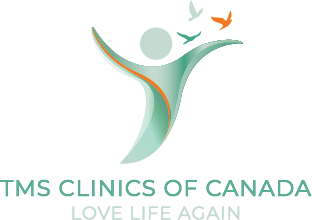
Revolutionizing Depression Treatment: A Deep Dive into TMS Therapy
Amidst the bustling city life and the serene shores of Lake Ontario, Toronto’s healthcare landscape is embracing an innovative approach to treating depression: Transcranial Magnetic Stimulation, or TMS Therapy. This non-invasive treatment is a beacon of hope for many who have not found relief from depression through traditional methods. By demystifying the science behind TMS Therapy, potential patients can gain an understanding of how this modern marvel works, comparing the brain’s network of neurons to the city’s web of interconnected streets and pathways, with magnetic fields serving to redirect the traffic flow of neural activity.
The Science of TMS Explained
At first glance, TMS Therapy might sound like something from a science fiction novel. Yet, it is grounded in the well-researched principles of neurology and psychiatry. Imagine the brain as Toronto’s power grid, with billions of neurons transmitting electric signals like countless lights flickering across the city. In some individuals with depression, certain areas of this grid are less active—similar to neighborhoods experiencing a blackout. TMS Therapy aims to restore power to these areas.
How TMS Interacts with Brain Neurons
TMS Therapy uses focused magnetic pulses to stimulate specific regions of the brain. Picture Toronto’s iconic CN Tower sending out radio waves: just as these waves can pass through buildings and carry information throughout the city, the magnetic pulses of TMS penetrate the skull non-invasively and reach targeted brain neurons. These pulses can jumpstart the neurons, enhancing their ability to fire and communicate with each other, effectively brightening the once-dim areas of the brain’s grid.
Understanding the TMS Procedure
The TMS procedure involves sitting comfortably in a chair while a clinician positions a magnetic coil against the scalp. This coil then generates brief magnetic fields, similar to those produced by an MRI machine. During a session, patients might hear a tapping sound and feel a tapping sensation under the coil but typically experience no significant discomfort—much like feeling the vibration of a passing subway train while sitting in a café above ground.
Accessibility and Non-Invasiveness of TMS
One of the most compelling aspects of TMS Therapy is its non-invasive nature. Unlike surgical procedures that require recovery time—akin to the lengthy process of building a new subway line—TMS sessions require no anesthesia and no recovery period. Patients can immediately resume their daily activities, whether that’s a walk through High Park or returning to work in the Financial District.
Effectiveness of TMS Therapy
Clinical trials and patient testimonies attest to the effectiveness of TMS Therapy in reducing depressive symptoms. For many, the results can be likened to the rejuvenating effect of spring after a long Toronto winter; the fog of depression lifts, allowing the colors of life to show through once more. The treatment is particularly appealing for those who have not responded to medications, offering a new route on the road to recovery.
The TMS Therapy Course
A typical course of TMS Therapy might involve daily sessions over several weeks. The parallel in city life could be the regular maintenance required to keep Toronto’s infrastructure running smoothly. Consistency is key, and over time, the cumulative effect of these sessions aims to bring lasting improvements in mood and cognitive function.
Personalized Treatment Plans
Just as Toronto is a tapestry of diverse neighborhoods, each person’s brain is unique. TMS Therapy can be tailored to individual needs, with specialists adjusting the magnetic field’s strength and pinpointing the exact area of stimulation. This personalized approach ensures that TMS offers a neighborhood-specific solution rather than a one-size-fits-all remedy.
Safety and Side Effects
Safety is paramount in any treatment, and TMS is FDA-approved, with an excellent safety record. Most side effects are mild and short-lived, similar to the temporary inconvenience of a street closure for a city marathon. Scalp discomfort during treatment and mild headaches afterward are the most commonly reported side effects, but these typically diminish over time.
Integration with Other Depression Treatments
TMS Therapy is not a standalone solution. It can be integrated into a broader treatment plan, much like how public transit is just one part of Toronto’s comprehensive transportation network. TMS can complement psychotherapy, medication, and lifestyle changes, creating a multi-faceted approach to combat depression.
Future of TMS in Depression Treatment
The landscape of depression treatment is evolving, with TMS at the forefront of cutting-edge options. Ongoing research into TMS Therapy promises further advancements, potentially making the treatment more effective, more efficient, and accessible to a broader range of patients.
The revolutionary approach of TMS Therapy offers a new horizon for those battling depression in the Toronto area. By employing the power of magnetic fields, TMS Therapy can help reroute neural activity, energizing the once dormant areas of the brain, much like how a city works to revitalize and illuminate its quieter streets. With its non-invasive technique, tailored sessions, and potential for long-term relief, TMS Therapy stands as a testament to the progress in mental health treatment, leading the way to brighter days for individuals living with depression.
Explore a new beginning with TMS Clinics of Canada and step towards a brighter, depression-free future. Our personalized treatment plans are tailored to your unique needs, providing you with the most effective care. Contact us today to learn more about our innovative TMS therapy and how we can help. Start your journey to recovery today!
